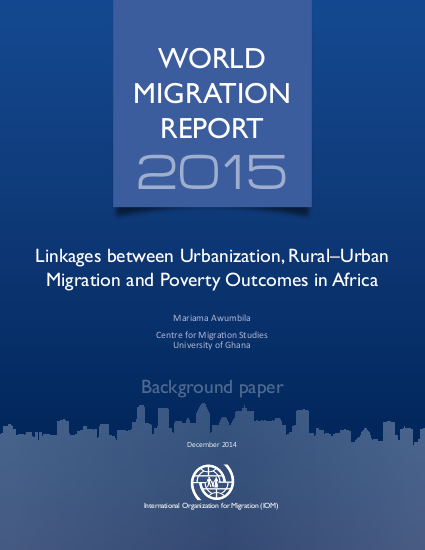Linkages between Urbanization, Rural-Urban Migration and Poverty Outcomes in Africa

Urbanization is increasingly being acknowledged as one of the most defining issues of the twenty-first century. More than half of the world’s population now lives in towns and cities, and the figure is projected to rise to 75 per cent by 2050 (UN DESA, 2015), with most of this urban growth concentrated in Africa and Asia. Urbanization is critical for economic growth, poverty reduction, the stabilization of population growth and long-term sustainability. The high rates of urbanization in Asia and Africa indicate that global urbanization has shifted to developing countries and emerging economies. There are twice as many people – 2.3 billion – living in urban agglomerations in developing countries as there are living in cities in industrialized nations. In 2030, there will be four times as many, totalling 3.9 billion people, 60 per cent of whom will be below 18 years of age (UN-Habitat, 2014a). Therefore, the future of developing countries is increasingly being determined by urbanization and a population structure that has a disproportionate number of young people. In the developing world, Africa has experienced the highest rate of urban growth during the last two decades, at 3.5 per cent per year, and this rate of growth is expected to hold into 2050. It is estimated that, by 2025, more than half of the population of Africa will live and work in urban centres, compared with 14.5 per cent in 1950, 28 per cent in 1980 and 34 per cent in 1990 (UN-Habitat, 2014a).
Links
Resource collections
- UN Habitat - Urban Response Collection
- Urban Response - Urban Crisis Preparedness and Risk Reduction
- Urban Response Collection - Community Engagement and Social Cohesion
- Urban Response Collection - Economic Recovery
- Urban Response Collection - Environment and Climate Change
- Urban Response Collection - Housing, Land and Property
- Urban Response Collection - Urban Crisis Response, Recovery and Reconstruction
- Urban Response Collection - Urban Resilience